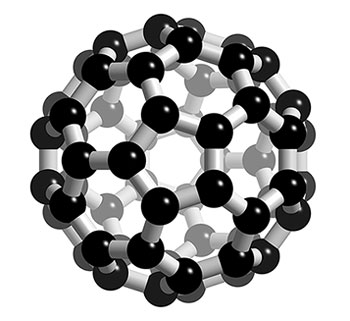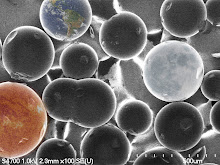me I could do the recitation in my sleep, but the educator in me feels the need to prepare. Thus, my update is not as punctual as I'd like.
Anywho . . . Buckminster Fuller. Anyone who has seen a geodesic dome is familiar with his most noteworthy architectural contribution, at which he arrived quite independently of Dr. Walther Bauersfeld, who used the dome design successfully to construct a planetarium 20 years prior to Fuller's work with domes. Epcot Center represents a full geodesic sphere, of which a dome is but a partial section.
Beyond his architecture, Fuller began thinking and writing about concepts like environmental sustainability. I'll let the man speak for himself about this and other topics beyond architecture.
Does humanity have a chance to survive lastingly and successfully on planet Earth, and if so, how?
For the first time in history it is now possible to take care of everybody at a higher standard of living than any have ever known.
Only ten years ago the ‘more with less’ technology reached the point where this could be done. All humanity now has the option to become enduringly successful.
Pollution is nothing but the resources we are not harvesting. We allow them to disperse because we've been ignorant of their value.
When I am working on a problem, I never think about beauty. I think only how to solve the problem. But when I've finished, if the solution isn't beautiful, I know it's wrong.
I look for what needs to be done. After all, that's how the universe designs itself.
There is nothing in a caterpillar that tells you it's going to be a butterfly.
Intuition operates in the twilight zone between conscious and subconscious.
The nearest each of us can come to God is by loving the truth.
God, to me, it seems, is a verb not a noun, proper or improper.
Ninety-nine percent of who you are is invisible and untouchable.

 For the chemist, Buckminster Fuller is most known for his legacy in Fullerene chemistry. The soccer ball-shaped Buckyball, more formally the Buckminster Fullerene, is essentially a geodesic sphere composed of carbon atoms at the vertices.
For the chemist, Buckminster Fuller is most known for his legacy in Fullerene chemistry. The soccer ball-shaped Buckyball, more formally the Buckminster Fullerene, is essentially a geodesic sphere composed of carbon atoms at the vertices.Fullerene chemistry has extended beyond the Buckyball to flat sheets & tubes (carbon nanotubes). Graphene (flat sheet form) carbon has recently been exploited by researchers at UC Berkeley for its semiconducting properties.
A materials scientist here at Tech borrowed some quartz cuvettes this week so he could obtain a ultraviolet-visible spectrum of some Fullerenes in benzene. It turns out he's working on using Buckyballs in solar cells. I'll give an update when he returns the cuvettes.

No comments:
Post a Comment